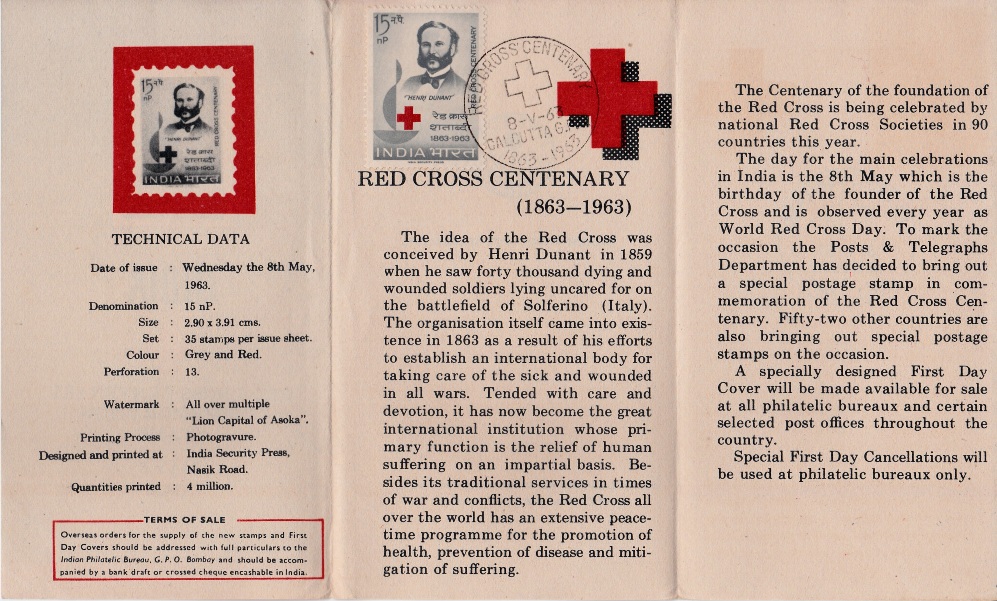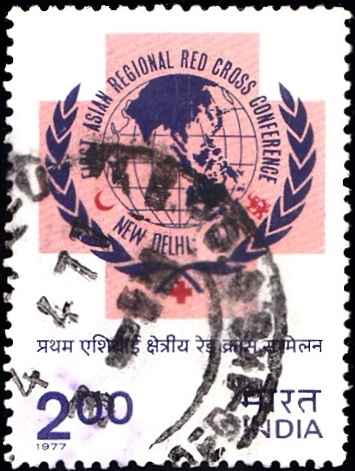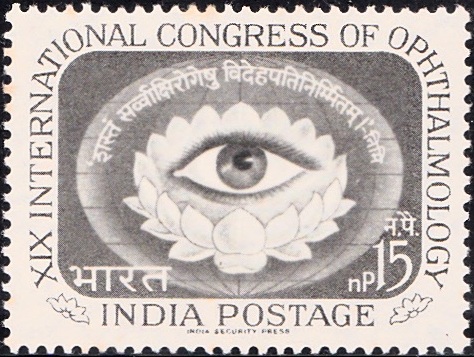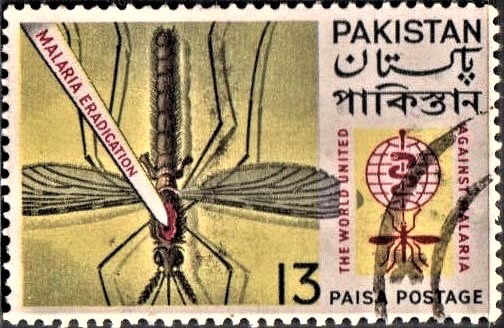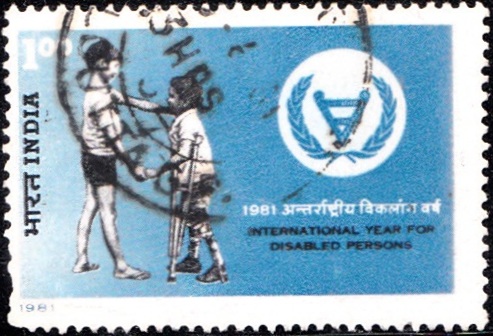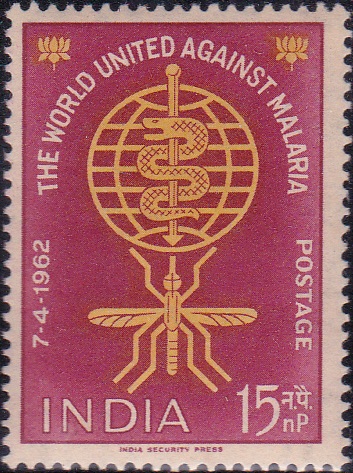
India on Malaria Eradication 1962
A commemorative postage stamp on the WHO drive to eradicate Malaria :
Issued on Apr 7, 1962
Issued for : The Posts and Telegraphs Department joins the campaign to create a greater awareness of the problem by issuing a special postage stamp on April 7, 1962. The stamp is being issued in response to an appeal by the World Health Organization to various countries and carries the slogan “The World United Against Malaria“. April 7 has been chosen by the Indian Posts and Telegraphs Department for the issue of the stamp as this day happens to be the World Health Day. The design carries in the upper part the Globe as a symbol of worldwide co-operation. The lower part of the stamp shows the anopheline vector of malaria attacked by the Aesculapean staff.
Designed by : Staff artist of the India Security Press
Type : Stamp, Mint condition
Colour :
Tint – Buff
Body – Maroon
Denomination : 15 nP
Size : 3.91 cms. x 2.90 cms.
Perforation : 13
Watermark : All over multiple ‘Lion Capital of Asoka‘
Quantity Printed : 3.5 million
Set : 35 stamps per issue sheet
Printing process : Photogravure
Printed at : India Security Press, Nasik Road
About :
- Malaria continues to be the world’s greatest single cause of disablement and the world’s costliest disease. A million people die of malaria every year even now.
- Malaria is present in 140 countries and territories inhabited by over 1,000 million people.
- There can be little doubt that the eradication of malaria is essential to mankind’s progress, economic, social and cultural.
- To quote Dr. M.G. Candau, Director General of World Health Organization, “in man’s endless struggle for a healthier life, to free the world from the ancient scourge of malaria will be a great victory. But it is not the health aspect alone which makes a worldwide eradication campaign worth the effort and sacrifice. The disease has striking repercussions on economic production and social progress in under-developed countries. Today….the fight against malaria is an inherent part of the social and economic action of the United Nations and its specialized agencies“.
- Today eradication of malaria is within mankind’s reach. In fact, eradication has been achieved already in some areas and has stood the test of time. A worldwide campaign has been launched by the World Health Organisation. Man today possesses the necessary knowledge and the necessary experience to wipe out malaria. The programme has already yielded results and the number of people that fell ill from malaria every year has dropped from 250 million in 1955 to 140 million. According to available statistics, out of a total population of 1,381 million people who were exposed to the risk of malaria 305 million in 39 countries now live in areas free of this disease. The number of countries that have succeeded in banishing malaria is increasing year by year. In 1961 the greatest venture in public health the world has ever seen was going forward in 67 countries.
- India too is engaged on a country-wide campaign to eradicate this disease and to free its 400 million people from the threat of malaria.
- The ravages caused by malaria in India are too well-known. An estimate of 1952 indicated that 75 to 80 million people suffered from this disease every year and at least 0.8 to 1 million people died as a direct result of malaria and another 1 to 1.5 million indirectly. Many millions who had repeated attacks were debilitated for long periods. Apart from the intense human sufferings, the economic repercussions were serious.
- Available records show that the proportionate case rate which was 10.8 per cent, in 1953 had been lowered to 0.6 per cent, by September 1961.
- Prior to the Second World War, malaria control in India was confined mainly to semi-urban areas and the activity was directed towards application of larvicidal agents such as oil or paris-green. In the absence of definite knowledge for economic control of malaria in rural areas a nation-wide malaria control programme was only a dream. Since the war, however, the position has entirely changed. Several pilot projects were initiated and by 1952 about 30 million people had been protected.
- In the light of the success of pilot projects, the Government of India launched the National Malaria Control Programme in 1953.
- The programme was run for a period of 5 years in a phased manner with the object of affording protection to 200 million people living in highly malarious areas. By the end of this 5-year period a total population of 163 million people had received full protection and 30 million partial protection.
- Meanwhile large scale malaria control operations in other countries brought out several important factors. There was, on the one hand the possibility of development of resistance in the vectors against the insecticides in use against them, and, on the other, the realization that eradication could be achieved and at a comparatively lesser cost. These factors paved the way towards launching of a nationwide malaria eradication campaign. The programme, which was launched from 1958, was to be assisted by the United States Technical Cooperation Mission and the World Health Organization.
- The activities under the programme were to intensify spray operations in every roofed structure in the country for a period of 3 to 5 years and in some areas for an even longer period. Surveillance operations comprising of detection of cases and other scientific investigations were to commence from the third year of the programme.
- By the end of the first two years, all the units had been set up and operations had commenced. Machinery had been established for (i) spraying every house in rural or semi-urban areas with insecticide, (ii) peripheral belt spray in every large urban area, (iii) for every house to be visited twice a month in search of cases of fever as it was only through the systematic examination of blood smears that it is possible to hunt down every single case of malaria; (iv) for taking similar steps in all medical institutions and hospitals with the cooperation of the medical profession as a whole; (v) for searching out every positive case and to institute radical treatment and (vi) for conducting epidemiological investigations and taking appropriate measures.
- The programme is already half-way through and has entered from this year the consolidation phase in respect of nearly one-third of the total number of units from where spraying would be withdrawn. A programme of such gigantic magnitude, no doubt, faces immense problems, administrative, technical and operational.
- The Government of India and the State Governments have given the programme the highest priority and have allocated nearly one-fifth of the nation’s public health budget for the implementation of this task and are attempting to stamp out the disease once for all and thus contribute towards the global malaria eradication.



